How I Switched My Cat to Wood Litter
A Guide to Having Your Patience Tested While You Outsmart Your Cat
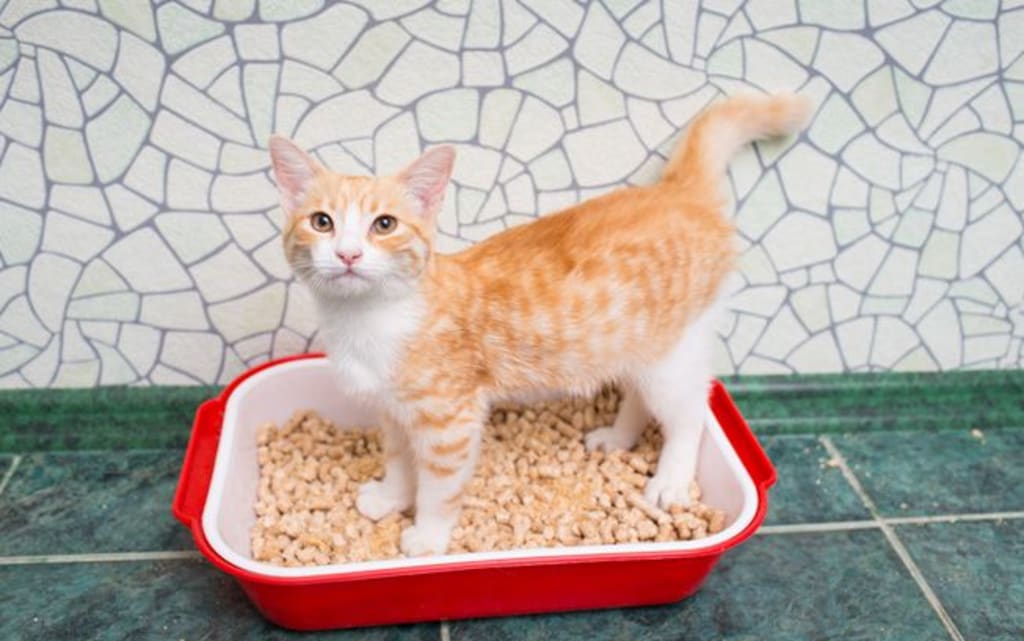
As someone who grew up with cats, cat litter was always a staple in my household. I saw litters of every kind come and go. From massive boxes of clay that I could barely lift with my scrawny arms to fancy, Fabreeze infused litters that gave me a headache and, of course, "miracle" lightweight litter that gave off more dust than could possibly be safe for any creature to inhale. Despite my misgivings about litter, and it's annoying habit of ending up all over my apartment, I always felt that it was a necessary aspect of owning a cat. Little did I realize there was a cost-effective, biodegradable solution that I could be using! I'm talking about wood pellets.
In just four easy steps, I'll explain how I trained my cat to use wood pellets. Hopefully, you can use my experiences to decide if wood litter is right for you and your cat!
The Research Process
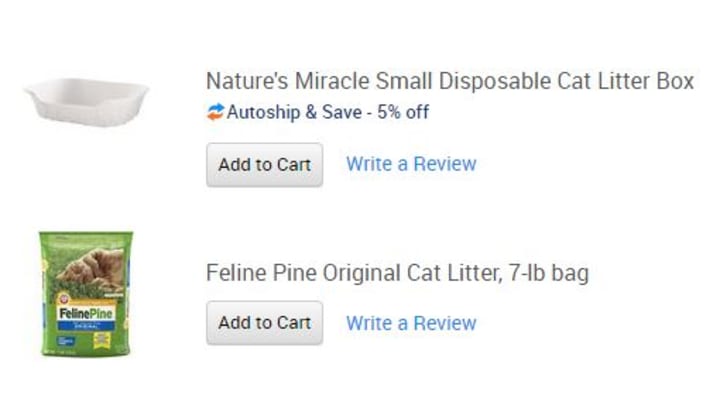
My cart on Chewy.com
My cat—a beautiful 5-year-old calico—is certainly no longer a moldable kitten, so I knew getting her to make a change like this wouldn't be easy. The first thing I did was research the wood litter online and see how others went about the switching process. Once I was satisfied that I had some idea of what I was doing, I went on Chewy.com and ordered a bag of wood litter and a small disposable litter box. Thankfully, the FelinePine litter also had some basic instructions on the bag.
Step One: The Waiting Game
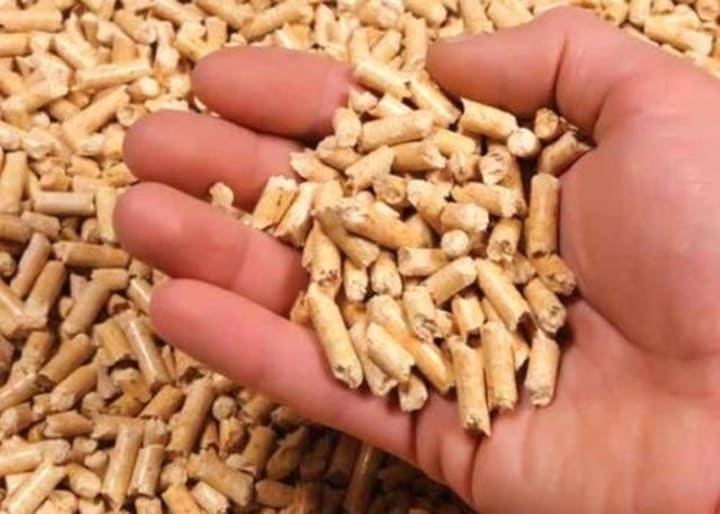
The size of the pellets seemed odd to me at first.
As instructed, I placed the disposable litter box next to her current litter box and filled it with the wood pellets. The first thing I noticed was that the pellets were very large, which was not exactly what I was expecting. Thankfully, what my cat lacks in moldability she certainly makes up for in curiosity! She dutifully sniffed around in the new litter box, seemingly as confused by these new objects as I was. Then began the waiting game.
After a couple of days, I noticed a small miracle. My cat had left a pee spot in her new wood litter! It's very easy to see the pee spots because the wood pellets turn into sawdust as they get used. After about a week of her peeing in the wood litter, she was ready to move onto step two!
*Quick note: One thing I noticed pretty quickly was that I could tell the wood litter needed to be changed once it no longer held the cat pee smell. After a certain amount of it had turned to sawdust I needed to dump the box and start from scratch with new litter or my whole apartment would smell.
Step Two: Mix and Match
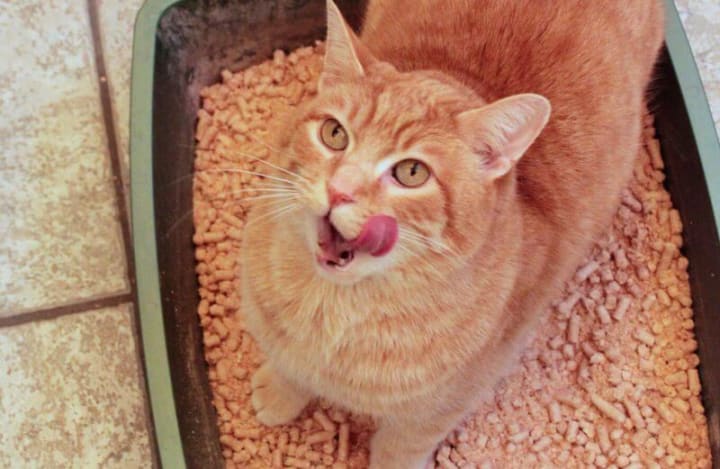
The 'used' litter becomes more like sawdust.
Because my cat used the wood litter on her own I was able to use the wood litter as a base and mix in some regular litter. If she didn't take to the wood litter, then I would have to use the regular litter as a base and mix in the wood litter slowly. So, I cleaned out her usual litter box and gave it a nice base coat of wood pellets and mixed in a few scoops of regular litter. I filled the small disposable litter box with plain clay litter to allow her some regularity if she became overwhelmed by the change.
After this change she hit her second milestone, not only was she peeing in the wood pellet/litter mixture, she also started leaving the rest of her business there as well! By this time I had actually also run out of the original bag of wood litter (7 pounds did not last nearly as long as I had expected) and I ordered a larger bag on Amazon that was actually marketed as wood pellets for bunnies. I found there to be no difference in the quality of the pellets and it was significantly cheaper than the pellets marketed as "cat litter."
Another thing I noticed during this stage was that it was a little difficult to scoop her poop out of the wood pellets because my scooper was not designed with holes big enough to sift out the pellets. However, I decided a few lost pellets wasn't much of a waste in the long run.
Step Three: Testing the Waters
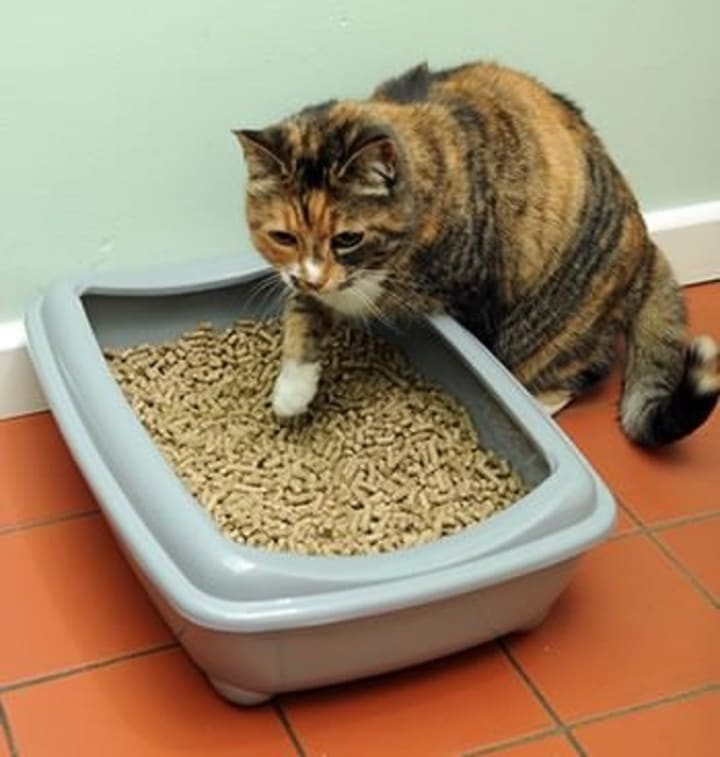
Many cats will be slow to warm up to this new thing.
The trick with this type of training is to go as slow as possible. You cannot rush a grown cat to do anything. I don't know why I expected this to be any different. After several more weeks of step three with mixed litter and wood pellets in one box and plain litter in the secondary box, I decided to push my luck. I started refilling the wood pellet box with less and less clay litter after every cleaning (mostly because it's a pain to clean the box with both types of litter involved). This went okay until I noticed her using the secondary clay litter box again.
So from there, I began to slowly move the clay litter box away and out of her normal litter area. I eventually moved the clay litter box into another room. My cat seemed relatively unphased by this. She continued to occasionally seek out the clay box in the other room but she seemed to be using it more as a convenient second bathroom than as a primary box.
At this point, I also noticed a difference in the amount of stuff tracked through the apartment. My cat is a kicker, she loved to see how far she could fling the cat litter out of the box. However, with the wood pellets, I don't see her engaging in that kind of behavior. I also don't find the sawdust to be as much of a problem as initially anticipated, it doesn't seem to cling to her feet as the clay litter did.
Step Four: Cut the Cord
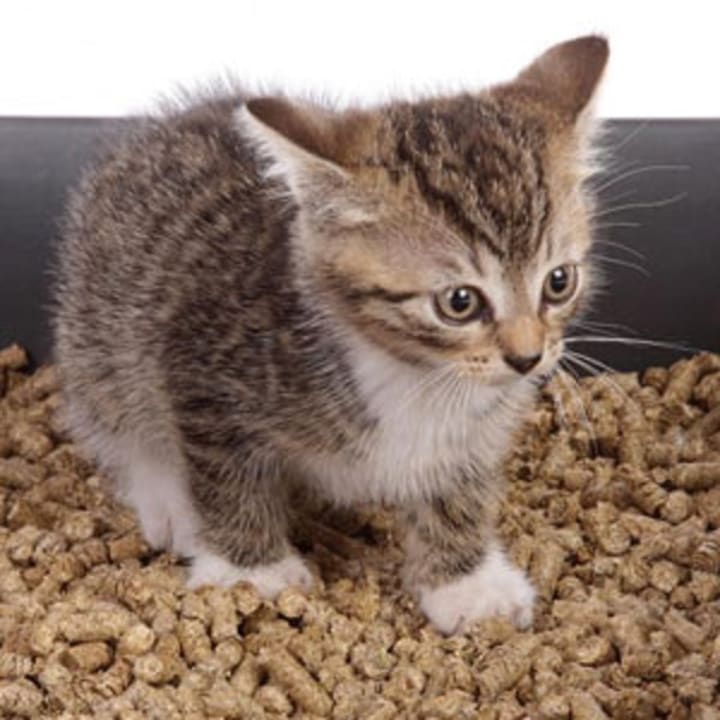
Wood litter training is easiest for kittens.
After another couple of weeks of this arrangement, I decided it would be time to take off the training wheels. I made the move of throwing out the secondary clay litter box. I wish I could say this was an immeadiate success.
My cat accepted this disappearance for about a day. The fatal flaw was actually one I did not expect. When I moved the secondary litter box into the other room I placed it into a large tub to keep the cat litter from getting all over my rug. But when I threw away the litter box, I kept the tub sitting in the house. My poor confused kitty decided to continue peeing in the tub sans litter box.
Step Four (Again): For Real This Time
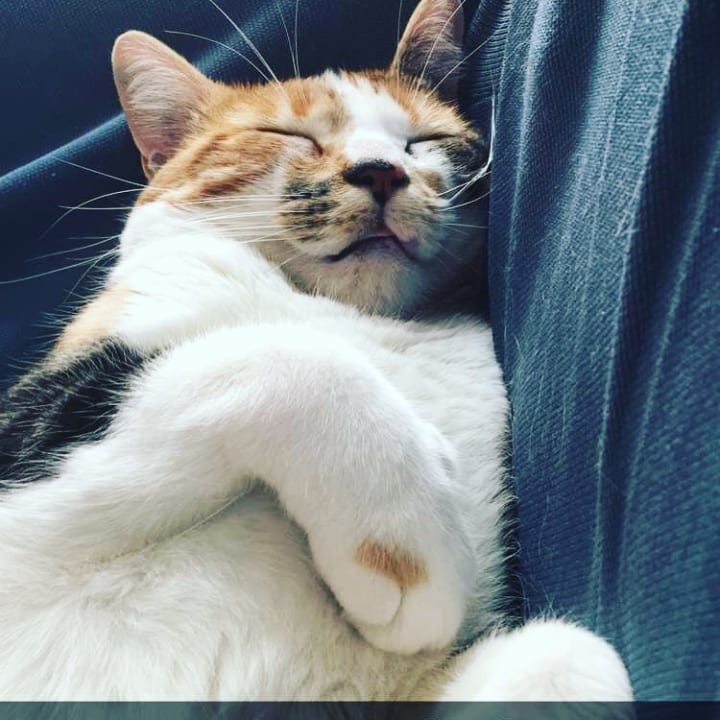
My cat resting after completing the hard work of wood litter training!
So, I may be one tub down but step four finally became a success! After throwing away the defiled tub and adding a little more clay litter to her wood pellets, the process seemed back on track. She was content to continue doing her potty dance in the wood litter while I slowly removed the rest of the clay litter from her box. This final step took a couple more weeks and, to my cat's credit, she did really well with this final adjustment. I am beyond ecstatic to finally be done with the process, and I'm sure my cat is too.
Well, it took a very long time and a lot of patience on both our parts, but was it worth it? I think so. Wood pellets definitely have their pros and cons and I wouldn't say they are for everyone. If you are willing to be patient and allow your cat as long as they need to explore as well as put up with any accidents that occur, then I would highly recommend it. If you buy wood pellets in bulk from the local hardware store (about 4 dollars for a 50-pound bag) or get a non-cat litter brand (such as a bunny brand), then you will save a ton of money over traditional clay litters that can be upwards of 20 dollars for premium brands. Not to mention cutting out the dust and litter particles that your cat ingests when they clean themselves!
Overall, I would definitely recommend this process. Perhaps you can learn from my mistakes and have a smoother time replicating it with your own cat!
About the Creator
Alina Gallupe
I am a graduate student of Mental Health Counseling in Cambridge, MA. I strive to combine my mental health knowledge and my love of writing to explore all topics related to the human experience. I am also a dedicated cat mom and home cook.



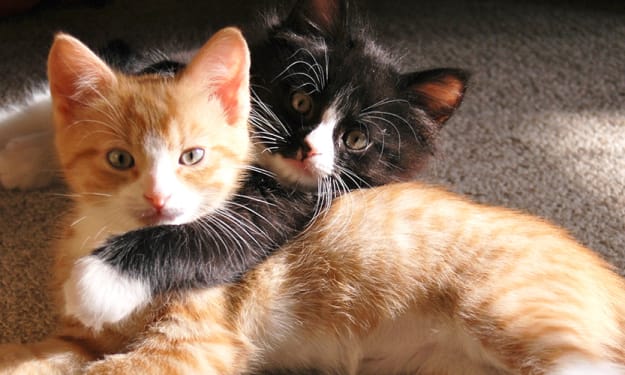



Comments
There are no comments for this story
Be the first to respond and start the conversation.